SEO
Free SEO Analysis
SEO Services
Content Marketing Services
Local SEO
Link Building Services
Specialized SEO Services
PPC
REPUTATION MANAGEMENT
Free Reputation Management Analysis
Reputation Management Services
Review Management Services
Specialized Reputation Management Services
CEO Reputation Management
Brand Enhancement
Business and Directory Listings
Comprehensive Reputation Management Audit
SOCIAL MEDIA
Free Social Media Analysis
Specialized Social Services
WEB DEVELOPMENT
Free Website Analysis
Web Design Services
Mobile Development Services
Website Maintenance Services
Specialized Development Services
MARKETING AUTOMATION
Free Marketing Automation Analysis
Specialized Marketing Automation Services
Comprehensive Marketing Automation
INDUSTRIES
ABOUT DMA
Digital Marketing
Digital Marketing News 05/17/2022 – 05/23/2022
Request a quote
Its Fast, Easy & Free
This week on the latest digital marketing updates: Elon Musk holds off on acquiring Twitter while waiting for accurate data on spam and fake accounts, Meta shares six culture codes that humanizes brands, YouTube expands the coverage of its Green Screen feature, TikTok announces a new insights tool, and Google Search Console now offers a performance report for translated search results.
Here are the latest news, trends, and updates in detail:
Elon Musk’s Twitter Deal 'Temporarily on Hold'
Tesla CEO Elon Musk puts his acquisition of Twitter on hold as he seeks more details on the estimate that less than 5% of accounts are spam and fake users.
Barely a month after it was revealed that Musk is set to purchase Twitter for $44 billion, the tycoon announced on May 13th that he is postponing the deal:
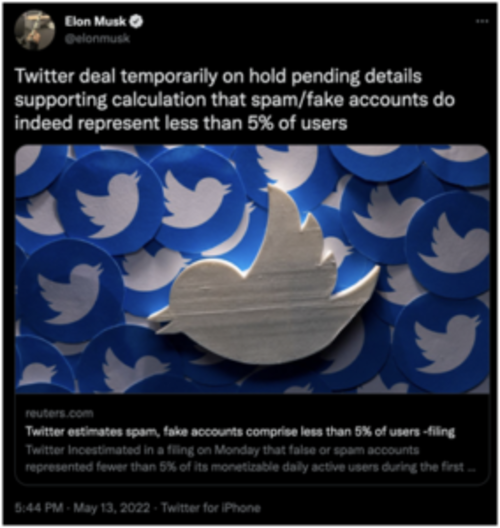
He followed up this announcement by saying that he believes 20% of users on the platform are spam or fake accounts and that the deal “cannot move forward” until Twitter’s CEO Parag Agrawal provides proof that backs their “less than 5%” claim.
Musk follows through on his mission to “eliminate spam bots” by investigating the depth of their presence in the social media platform.
To determine the reliability of Twitter’s estimated percentage of spam and fake accounts, Musk said that his team “will do a random sample of 100 followers of Twitter” and invites others to do the same and see what they discover. However, he also affirmed that he is “still committed to acquisition.”
Musk’s initial tweet linked to a Reuters article covering Twitter’s quarterly financial report, which included an estimation that less than 5% of the platform’s approximately 300 million monthly active users are spam or fake accounts.
This was based on a review of sample accounts, which Twitter deemed as a “reasonable” size. However, they also acknowledged that the measurements were not independently verified and the number of these accounts could be higher.
Meta Encourages Advertisers to Build Humanized Brands Using 6 Culture Codes
Meta shares the six culture codes that help brands produce the type of relatable content that audiences love.
Following an internal creative study of Instagram Stories, Facebook parent company Meta discovered that ads featuring lo-fi content and utilizing the language of the platform performed better than polished studio ads in terms of ad recall and views.
Meta suggests that this culture change may be driven by the type of content we create and share, which are mostly immediate, lo-fi, and in-the-moment snapshots of our lives. Brands are also compelled to share content faster and more often in order to keep up with the audience’s limited attention span.
Additionally, the social media culture has shifted, as more users are celebrating imperfect and real-life stories. This goes to show that people are tired of seeing polished ads that promote perfection.
According to Meta, “when brands understand prevailing culture codes, they communicate as peers, establishing relatability and trust through a shared language.” Here are the six culture codes that brands can harness to drive relevance:
Have real people tell real stories
- Brand experiences as told by employees and real-life customers are more relatable and credible.
Utilize the language of the platform
- By adopting and displaying recognized behavior across the platform (e.g., by utilizing popular transition effects and jumping on trends), brands can communicate with empathy and drive relatability.
Harness the influence of creators
- Creators have a way of telling a story about a product or brand in a way that advertisers sometimes can’t. They also have the power to establish trust and relatability.
Take the audience behind the scenes
- By taking people behind the scenes and letting them be part of the process (e.g., through a “day in the life” story), brands humanize themselves.
Use lo-fi editing techniques
- Lo-fi production tools and techniques help brands portray a more handcrafted image rather than a perfectly curated look.
Use humor to break down boundaries
- Humor makes brands less rigid and gives audiences the notion that they’re accessible and relatable.
YouTube Shorts Green Screen Now Available for More Types of Videos
Content creators can now use any eligible YouTube video or Short as the background for their original Short video with the latest update on the Green Screen feature.
Previously, creators could only utilize the Green Screen with other short videos on YouTube. Using this effect, you can overlay footage of yourself on top of the background video. This feature is commonly used for reaction, commentary, or sketch comedy YouTube Shorts.
In an announcement, YouTube shared the following details on the expansion of the Green Screen feature:
Creators can use other YouTube videos with or without their audio
Green Screen can be used with any photo or video from the creator’s device gallery
The maximum length you can create with is 60 seconds
Creators will get full credit for the original video when their content is remixed into a Short. This is also a new way to expand your audience.
Creators who don’t want their long-form content to be remixed by others can always
Any music videos or videos-on-demand with
are ineligible for Green Screen
Here’s where you can find the Green Screen feature in your YouTube app:
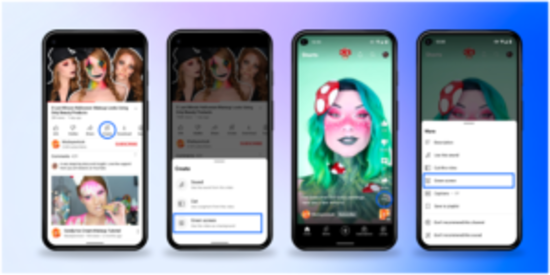
The Green Screen update is beginning its gradual rollout on the iOS YouTube app and in the coming months, it will be available to everyone on Android as well.
TikTok Launches Their Own Insights Tool for Marketers
TikTok Insights allows marketers to filter community data and discover user behavior, interests, and their general sentiment toward brands.
TikTok’s new tool features various filters that gives marketers access to granular data that can be used to target different demographics around the world. It’s also free to use, making it an ideal addition to your marketing toolbox.
When you access TikTok Insights, you’re presented with various tiles that each contain a piece of data.

You can sort through the data by selecting filters on the left side of the screen, which covers Audience, Insights, Industry, Holidays & Events, and the Year. Here’s an example of a filtered data:
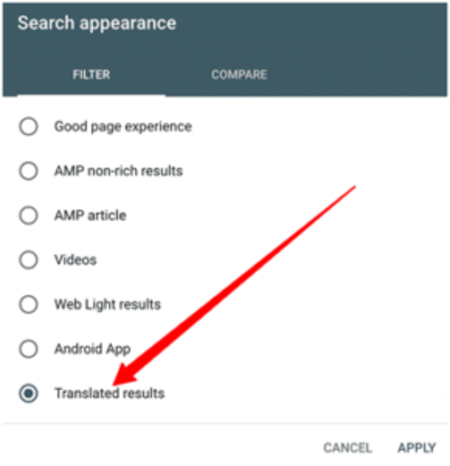
At the bottom of each tile TikTok includes the source of the data. By clicking “Source” you’ll be able to copy the citation.
It’s important to note that Tiktok Insights currently has limited data, so you’ll likely run into instances where there’s no results available. However, there’s much potential for TikTok Insights to be a valuable resource as it improves and gains more data over time.
Google Search Console Adds “Translated Results” to The Search Appearance Filter
This update is the newest addition to the Google Search Console’s performance reports. It revealshow searchers who get translated results interact with your content in Google Search.
The “Translated results” filter is accessible by logging into the Google Search Console, clicking on your performance report, and then clicking on the “+new” filter and selecting the search appearance for “Translated results.”
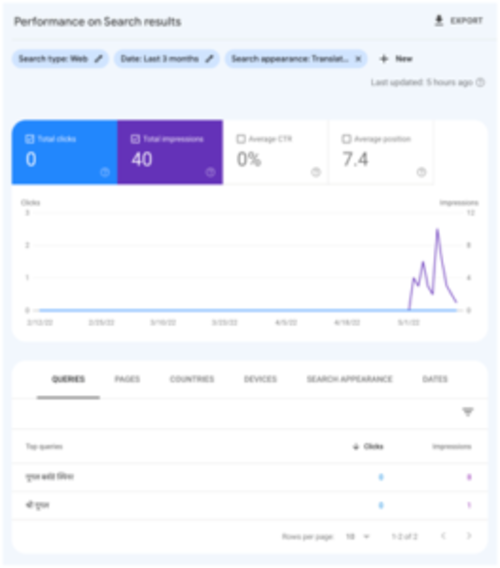
The Translated results report will break down what queries, pages, countries, and devices the searchers are using when finding your content in Google Search. Using the “Translated results” filter will generate a report that shows only those who get translated results.
Searchers who see translated results are those based on a country that may speak other languages aside from English. Google automatically translates the title link and description it shows in the search results. When the user clicks on the result, Google Translate is likely to translate the page as well.
As Google said, sometimes they may translate the title link and snippet for results that aren’t in the language of the search query. They do this because it enables users to view results from other languages in their own language, and it helps publishers reach a larger audience.
If the user clicks the translated title link, all further user interaction with the page is through Google Translate, which will automatically translate any links followed. This feature is applicable across all pages and results based on the user's language. To opt out of all translation features in Google Search, you can use the notranslate directive:
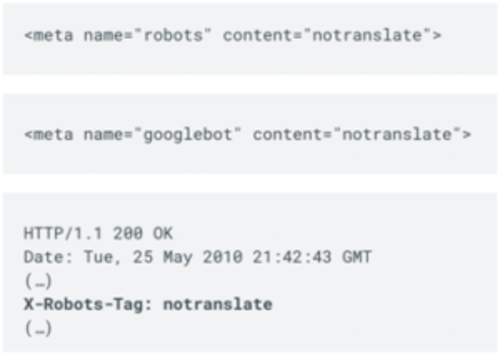
What you can do next
Follow best practices such as Meta’s six culture codes to produce relatable content that allows you to communicate with empathy and drive relatability.
Utilize the data offered by marketing tools such as TikTok Insights to refine your marketing campaigns and produce targeted ads.
Consider localizing your web content per country or region to effectively reach local audiences.
Elevate Your Marketing
45 Content Creation Tools To Level Up Your Social Media Marketing Game
Every digital marketer needs a tool to ease the process of coming up with quality content. Learn how to use the right content creation tools that will boost your user engagement and grow your business. Read more >
How to Leverage Moment Marketing to Bump Up Your Reach
Discover how you can utilize moments and trends to insert your brand in ongoing online conversations. Read more >
Our Sales team